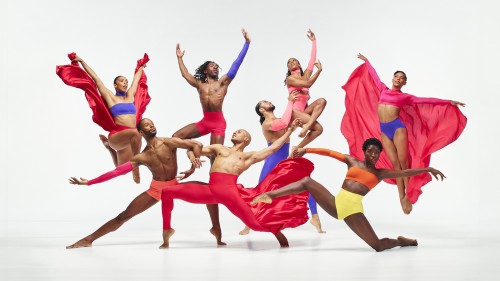
Zlatomir Fung, cello and Chaeyoung Park, piano
in Cambridge, MA
This site uses cookies to measure our traffic and improve your experience. By clicking "OK" you consent to our use of cookies.
Lang Lang’s expressive piano mastery and passion are evident to audiences across the globe. He consistently and expertly conveys the sweeping drama of music through his gestures, expressions, and sumptuous playing. As a performer and philanthropist, Lang Lang has made it his life’s work to share the beauty of the piano and classical music with audiences of all ages and levels of familiarity.
For this season’s recital, Lang Lang conjures vivid worlds of energy and emotion with essential Romantic-era classics from Fauré, Schumann, and Chopin: a treat for aficionados and newcomers alike.
The almost seventy years of France’s Third Republic, from 1871 to 1940, began and ended with military defeat at the hands of the Germans, but during those years, music and the other arts flourished in France. Initially, Gabriel Fauré’s work was little known in the United States, perhaps because he wrote so little for orchestra. Only connoisseurs knew his exquisite chamber music, his gracious piano compositions, and his expressive songs, but his peers in the French musical world valued him immediately. He was Ravel’s teacher, and Ravel dedicated his String Quartet to Fauré; the composer Arthur Honegger counted him among a small number he labeled “France’s greatest musicians ever.”
When the acclaimed teacher of composers, Nadia Boulanger, instilled principles in the minds and works of many young Americans who studied with her in Paris during the fifty years following the First World War, Fauré finally became known in America. Aaron Copland, Roy Harris, Walter Piston, and Virgil Thomson were influenced by his music. Copland once wrote of it: “To the superficial listener he probably sounds superficial. But those aware of musical refinement cannot help admire the transparent texture, the clarity of thought, and the well-shaped proportions. Together they constitute a kind of magic that is difficult to analyze but lovely to hear.”
Pavane is the name of a stately dance that originated in Spain and made its way to France during the Renaissance. Fauré’s Pavane, like the two pavanes his pupil Ravel composed, is a brief, elegant recreation of the past. Fauré originally conceived it as a work for piano with (or without) chorus, and, at a later time, at the suggestion of a noble patroness, he orchestrated it into the version most familiar to audiences today.
© Susan Halpern, 2025
The fabulist E.T.A. Hoffmann (1776-1822) was a lawyer, judge, conductor, composer, music critic, and writer of fiction. Now he is mostly remembered for his fiction because his works became the source material for such music as Tchaikovsky’s Nutcracker, Delibes’ Coppelia, and Offenbach's Tales of Hoffmann. In 1812 and 1813, Hoffmann wrote two critical essays that helped to establish Beethoven's music and Mozart's Don Giovanni in the musical repertory. Beethoven, to show his pleasure, composed a punning canon on Hoffmann's name.
Hoffmann invented Johannes Kreisler, a fictional conductor and composer. Hoffmann even went so far as to sign some of his essays with the name Johannes Kreisler, as the Kreisler of his fiction became his own alter ego, whom he pictured as a musician in emotional turmoil with an artistic soul preventing him from making peace with the Philistine society that he had to serve.
As a boy, Johannes Brahms, who sometimes referred to himself as “Kreisler Junior,” copied his favorite Kreisler stories into notebooks he called “Kreisler's Thesaurus.” Some years earlier, Schumann, who became Brahms' mentor and idol, had entitled a set of eight short piano pieces Kreisleriana. After making appearances in two early volumes of Hoffmann’s tales, Kreisler’s “life” came to a literary climax in the unfinished novel Kater Murr (“Murr, the Tomcat, His Views on Life—Together with Fragments of the Biography of Johannes Kreisler, the Conductor—From Loose and Dirty Scraps of Paper”). In this fantastic text, Murr appears, contented and robust, after writing his bourgeois philosophy of life on paper torn from Kappellmeister Kreisler’s biography. The printer, who prepares the manuscript for publication, sets both texts in type as a book-within-a-book, or two concurrent books, so that Murr’s worldly wisdom becomes interwoven with the story of Kreisler’s struggles to live and work as an artist. Some musicians find reflections of specific incidents from the Murr-Kreisler stories in Schumann’s Kreisleriana.
In 1838, when Schumann composed Kreisleriana, he was deeply in love with his piano teacher’s daughter, Clara, who was then only nineteen, two years shy of the date when her father’s objections could no longer prevent her from marrying him. Robert wrote to her, “There is so much music in me now, and such beautiful melody! I have written a whole sheaf of new things, and I shall call them Kreisleriana. You and the thought of you play the principal role in them and I shall dedicate them to you—yes to you and to no one else. You will smile so sweetly when you discover yourself in them.” A year later, Schumann wrote to a Belgian admirer that he liked Kreisleriana the best of his recent compositions, but in explaining Kreisler’s identity, he added, “The titles of all my works never come to me until after I have finished writing them.” These statements make Kreisleriana seem less a series of pictures of Hoffmann characters than a collection of imaginative romantic images conceived in the struggling, romantic artist's spirit. For reasons lost to history, when he published the music, Schumann dedicated it not to Clara but to Chopin, who, in return, in 1840, dedicated his F-major Ballade to Schumann.
In Kreisleriana, the beauty of the musical statements outshines their presumed literary source. The eight fantasies of Kreisleriana contain a sequence of lovely romantic effusions that change quickly in character as they alternate between fast and slow, and are, by turns, passionate, contemplative, agitated, introspective, elfin (or perhaps feline), retrospective, and valedictory.
© Susan Halpern, 2025
Opus 7, no. 3
Opus 17, nos. 1, 2, 4
Opus 24, nos. 2, 4
Opus 30, nos. 3, 4
Opus 33, nos. 3, 4, 2
Opus 59, no. 3
The mazurka is a folk dance that takes its name from the Mazury region, the ancient province of Mazovia in northeast Poland, where Chopin was born. It seems to have originated there as early as the sixteenth century, and in the eighteenth, Poland’s Saxon rulers introduced it to Germany. The mazurka is always in triple meter, and, but for the frequent displacement of accents, it would closely resemble the waltz. In his mazurkas, Chopin developed and combined three native Polish dance forms and traditional Polish classical music. His mazurkas explored rhythmic, modal, harmonic, textural, and emotional variety.
Chopin was the first composer to adapt the style of the mazurka to art music, and between 1820 and the end of his life, he wrote sixty of them based on the dance’s three main forms: the mazur, oberek, and the kujawiak. Chopin composed half of his mazurkas in the major mode, half in minor, and throughout all of them, he included modal harmonies. In the biography of Chopin that Franz Liszt published in 1852 (most of which may have been written by his Polish-born mistress, Princess Carolyne Sayn-Wittgenstein), he wrote, “It is only in Poland that it is possible to catch the haughty yet tender and alluring character of the mazurka. To understand how perfectly Chopin succeeded in displaying [its] magic, it is necessary to have seen that dance performed on its native soil.” [Abridged] Nevertheless, by the time that Chopin made the mazurka an important part of his concert repertoire, the mazurka was being danced in ballrooms from London to St. Petersburg.
Chopin’s interest in the new and different led to his development of this short character piece. The increasing interest in the national and patriotic contributed to the appropriation of several dance forms and compositional genres previously not used in European music. Chopin’s mazurkas are highly stylized, although some characteristics of the traditional mazurka, like the accent on the third beat and a drone bass, are usually retained. Some of the melodies of Chopin’s mazurkas seem unusual, but they grew out of the same kind of tiny rhythmic and melodic units that were to be found in folk mazurkas; in his mazurkas, Chopin also often uses rhythms and modes that are not often heard in Western music. Although he relied heavily on folk music, he did not quote actual folk melodies but instead used the folk rhythms and melodies to be an inspiration for his own original creations.
Chopin utilizes three-part form for most of his 56 mazurkas, forty-one of which were published during his lifetime. Many have da capo markings (signaling the musicians to return to the beginning of the piece and play the whole first part exactly as they had initially) indicating an identical first and last section.
As piano works, the mazurkas require rubato playing. A music critic of Chopin’s day, Henry Chorley, wrote, “They lose half their meaning if played without a certain freedom and license, impossible to imitate, but irresistible if the player at all feels the music.” As a group they are diverse in form, texture and expression, and in them, Chopin embraces a wide span of moods, much eloquence and emotion, and they range from innocent simplicity to complex sophistication, from exuberant whirling dances to melancholy soul searching, and they also blend folk music and erudite artistry. Through the years, Chopin’s mazurkas gradually changed in character. As his art matured, they came to be progressively less like literal echoes of a popular social dance and more like nostalgic evocations of his birthplace.
Chopin challenges performers of the mazurkas with his folk-inflected rhythms. Contemporary accounts of Chopin’s own performances have been interpreted to indicate that he played the mazurkas very freely with beats and accents that are not indicated in the music. It has been conjectured that perhaps he intended the score as a guide for a performance practice style that he and his students (and their contemporaries) passed down.
Chopin was the first composer to adapt the style of the mazurka to art music. He published Op. 7, a group of early mazurkas, in 1832 and dedicated them to a Mr. Johns, an American admirer of his work. With Op. 7, Chopin became recognized in France (as well as criticized by some) for bold and imaginative writing. In Op. 24, Chopin transformed the mazurka from a dance piece for the salon into an ambitious musical form, incorporating a wide range of moods and coloration. Mazurka Op. 24, no. 2 in C major is a short, energetic work, while No. 4, in B-flat minor, Moderato, the longest of the four works, begins with one of Chopin’s most refined passages, incorporating counterpoint from the beginning. This charming piece feels distant from what Chopin’s contemporaries would have considered a mazurka.
Op. 30, no. 3 is an exemplary piece; critics have intimated that Chopin’s inspiration was the city of Venice and that the listener hears “the wind murmur, the dipped oar rippling in the water, the gondolier singing, and from a great distance, Chopin’s phrases echoed just audibly by a fellow boatman.” Op. 30, no. 4, in C-sharp minor, is a miraculous small piece. Many details, especially garlands of grace notes and the exquisitely intertwined two chief melodic strands of the coda, make it memorable. Op. 59, no. 3, richly varied and noble, is both innovative and profound and feels at times like a waltz, at times like a polonaise. The transparent texture of the beginning becomes submerged in the work’s center as counterpoint subsumes the left-hand accompanying figure. The main theme’s melody is spun out with seeming endlessness. When Chopin brings back the opening material, he radically foreshortens it, giving the effect of making the structure less stable. The piece ends with a lengthy coda, which has a notable chromatic section.
© Susan Halpern, 2025
The polonaise was originally a stately court dance or a royal ceremonial march that was introduced to Poland by a French king who sat on the Polish throne in the sixteenth century. In the eighteenth century, when the Saxon Germans were the kings of Poland, the polonaise became a popular dance in the West, but in the hands of the nineteenth-century Polish composers, it became a musical symbol of their people’s struggle for independence from foreign rule, and it became removed from its dance origins as it proceeded in its development. Many other composers besides Chopin wrote polonaises, among them Bach, Mozart, Schubert, Beethoven, Weber, Wagner, and Liszt, yet Chopin is the composer inseparably linked with the polonaise and the one who idealized it as a kind of national epic.
The polonaise usually appears in a moderate triple meter and is characterized by its general lack of upbeats as well as its repeated rhythmic figures. Chopin composed his first polonaises when he was only seven years old. By then, the form had acquired a general structure, one not especially Polish in reference, although later, when Chopin was no longer in his native Poland, his mature polonaises became symbols of Polish nationalism for him and for his countrymen.
In Paris in 1830, Poland was in the news with the attempted rising against Russia and its suppression; all things Polish enjoyed considerable popularity, and Chopin gave the form a new level of complexity and expression. James Gibbons Huneker called the body of Chopin polonaises “heroic hymns of battle,” but while many do breathe a militant spirit, they are not battle cries; the melancholy, poetic Chopin also constantly peers through. Virtuosic elements, common in the later polonaises, are not as predominant in these very early polonaises (making up four of his first five compositions, written before he was thirteen years old).
In Op. 44, in F-sharp minor, Chopin makes the polonaise a powerful expression of national feeling. The work has a contrasting middle section, in which he utilizes another Polish dance, a mazurka. In a letter about publishing the piece, he wrote, “It is a kind of Fantasy in the form of a Polonaise, and I shall call it a Polonaise.” It is an extended work, built of long, elegant musical statements.
© Susan Halpern, 2025
“Lang’s fingers skimmed the keys apparently without effort, the melodic tumult glinting like priceless gems. ”
The Guardian

in Cambridge, MA

in Groton, MA




Co-sponsored by Ágora Cultural Architects.
Stay in touch with Celebrity Series of Boston and get the latest.
Email Updates Sign up for Email Updates